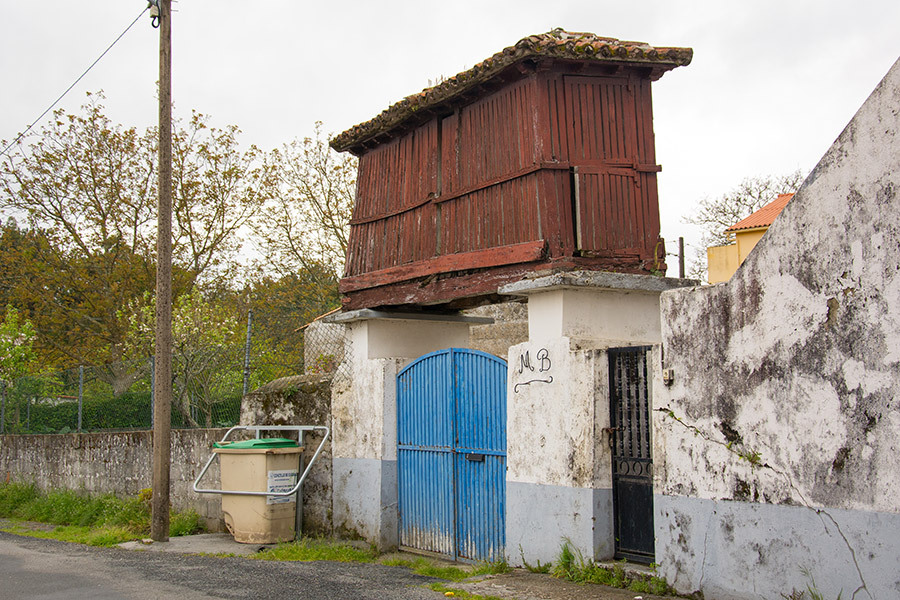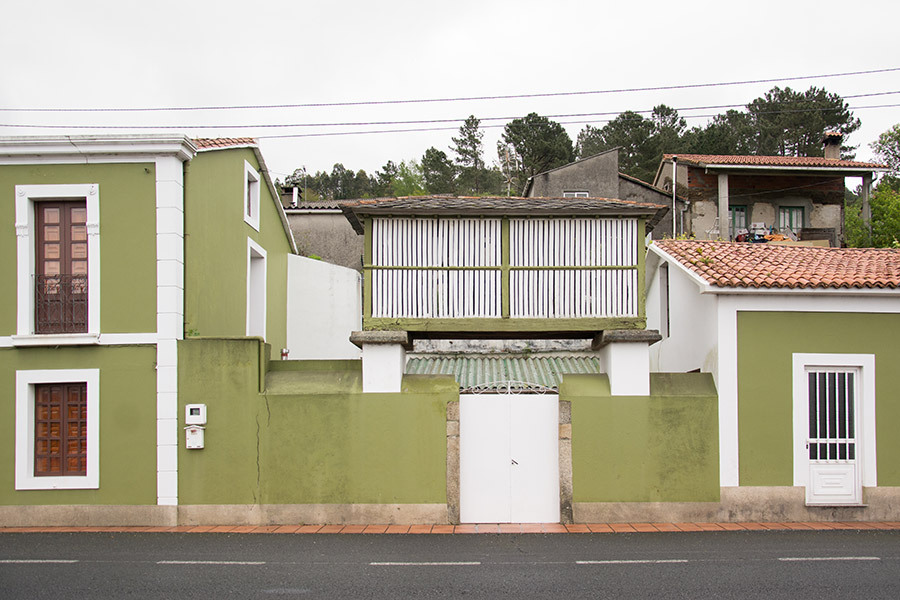Along the road are various curious rectangular constructions crowned by a decorative element, just as a cross may be. They are the raised granaries, peculiar buildings of the Galician countryside that are used as storage for the drying and conservation of corn. Owing to the fact that traditional agriculture is disappearing, the function of these granaries is also becoming unnecessary, for which some can be seen abandoned but still there are many that are in good condition.
Its moment of expansion and consolidation was in the 18th century with the spread of corn cultivation. It consists of several foundations which could be bases (Columns), vines (perpendicular wall) or a “Celeiro” (a rectangular enclosure). These foundations support the chamber, lifting it off the ground and impeding access to it by rodents. The chamber may be made of wood, stone or a combination of the two. Wooden chambers are normally painted, sometimes forming curious compositions. All of them have ornamental finishes, normally a cross and pinnacle. The size of the raised granary indicates the economic importance of the owners.
Given the diversity of the Galicia’s geography and the different uses of construction materials, there are many different types. In the areas around the English Way, we find “mariñán” and “carral” raised granaries. The former made of wood and common in As Mariñas county; the latter made of mixed materials and common in the areas north of Santiago. The former has variant known as “Cabanas” which are slightly broader and can be found in the municipality of Cabanas, the area in which we find ourselves now.
At this point, cross the road to reach the other side.

